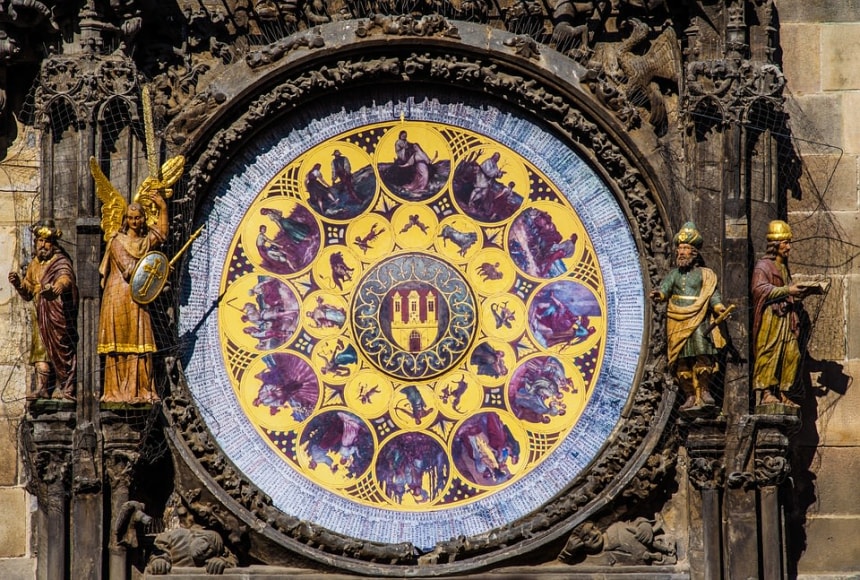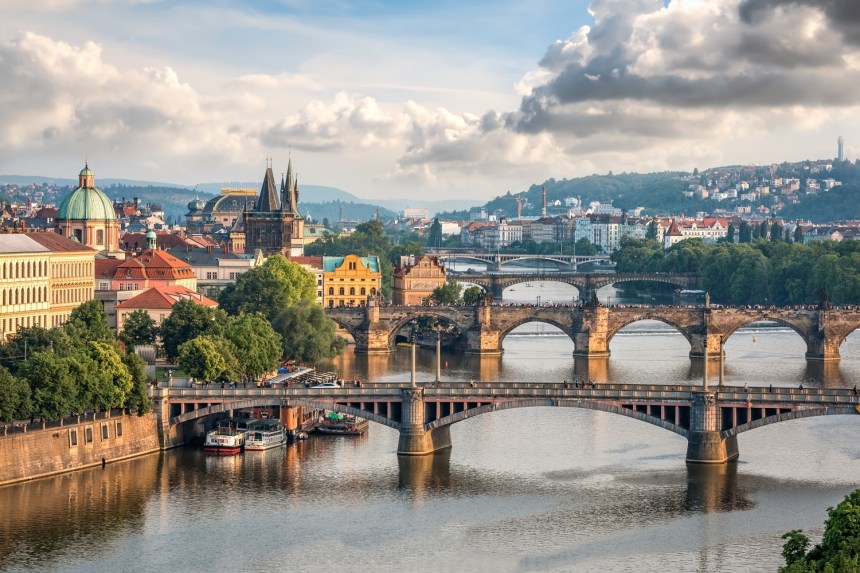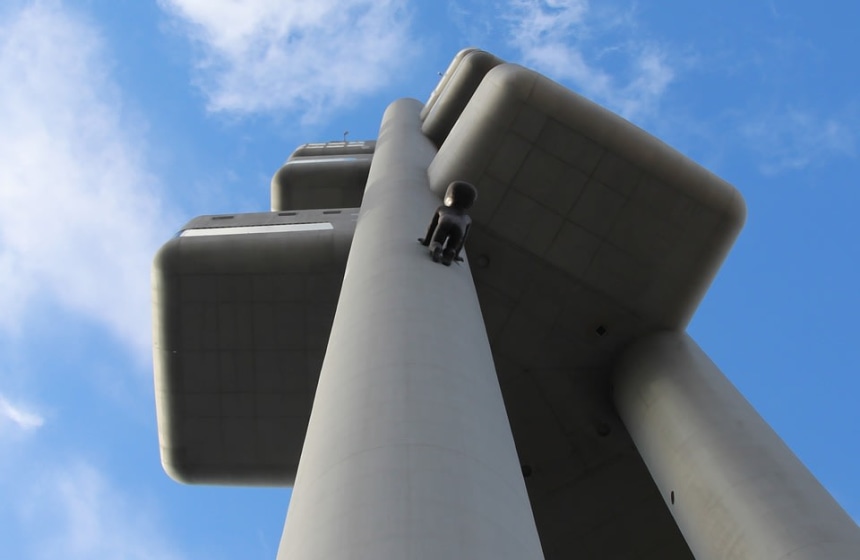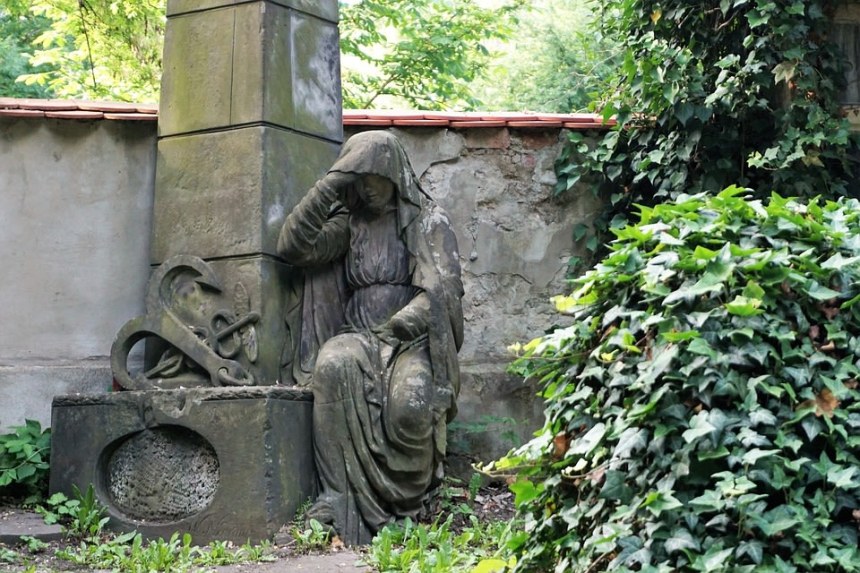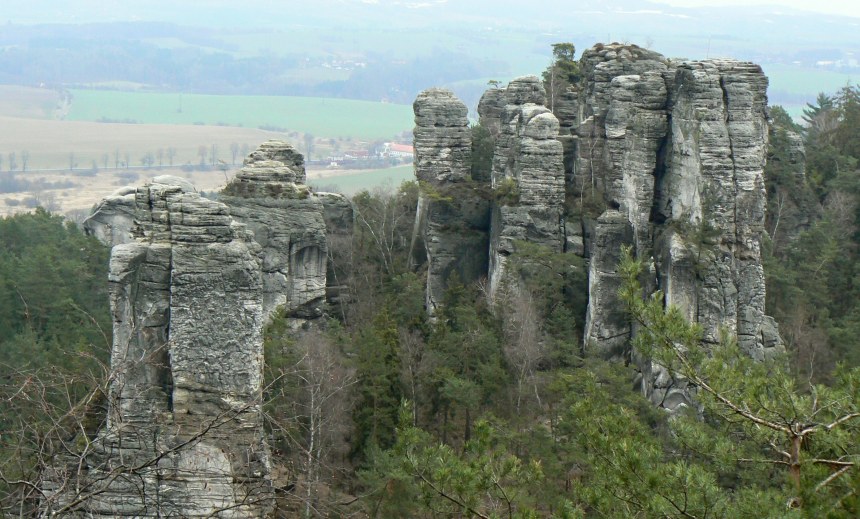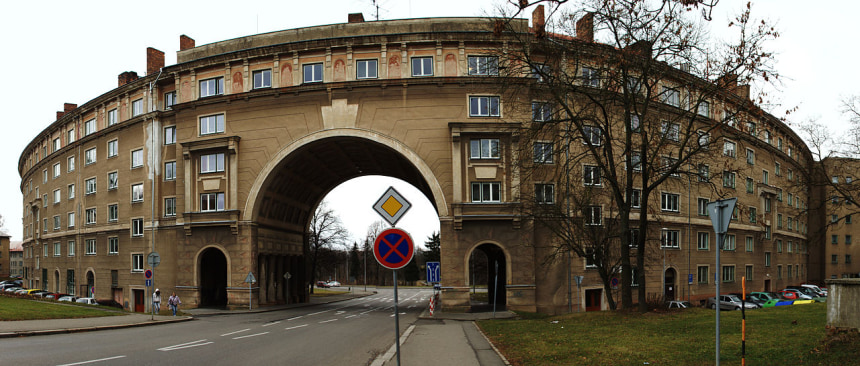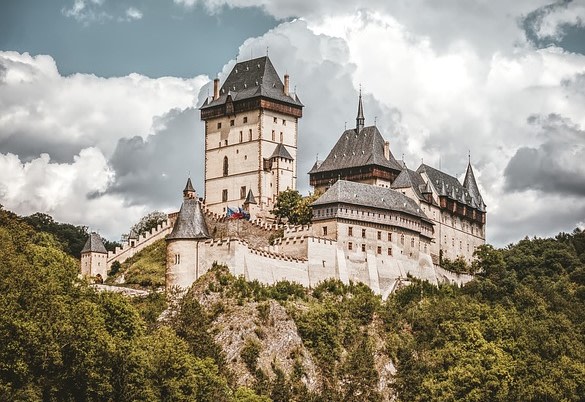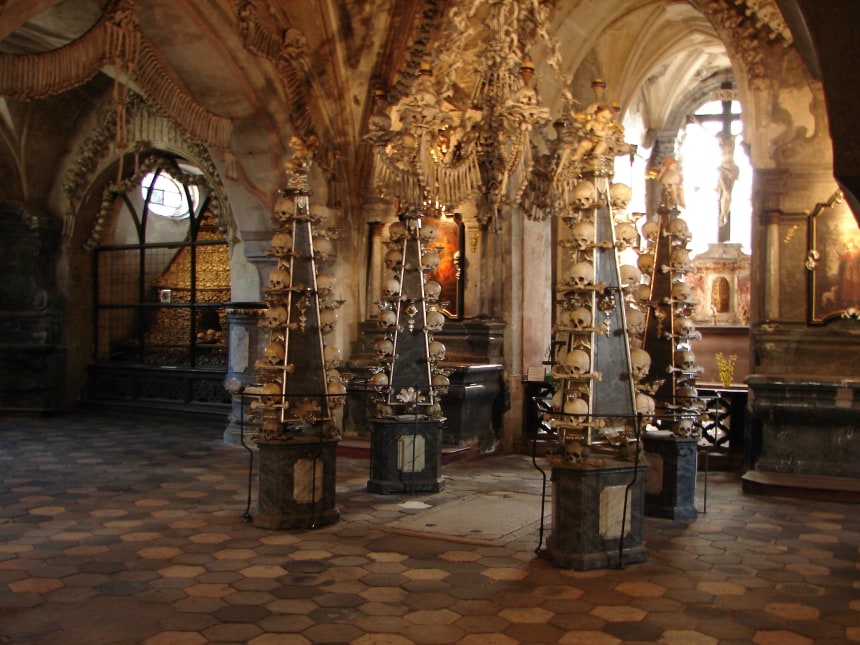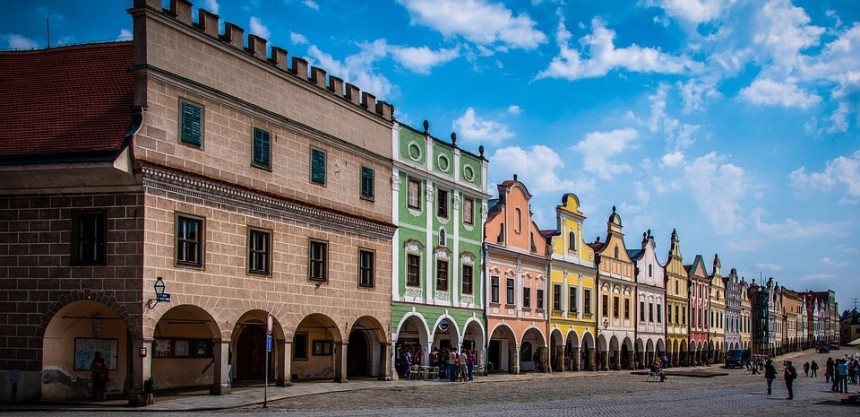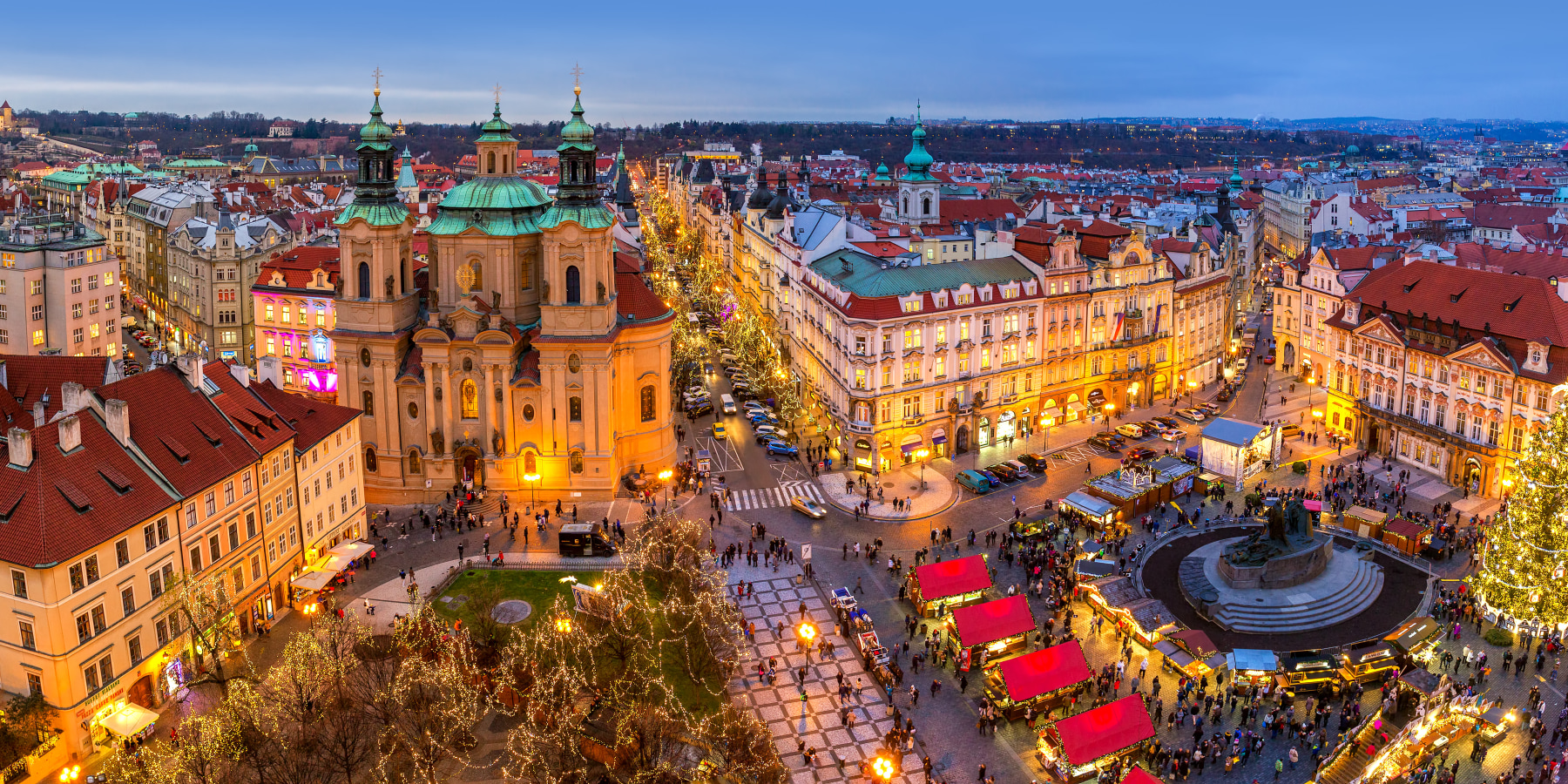Ross Cameron
With Germany to the west and Poland and Slovakia to the east, the Czech Republic is situated at a crossroads between Western Europe and the Slavic East. Since the 1989 Velvet Revolution, the country has transformed itself into one of Europe’s premier destinations with its gothic capital Prague now rivalling Rome and Paris as the continent’s city-break destination of choice. However, this Czech Republic travel guide will show you the country’s quirkiest attractions beyond the tourist trail.
Be beguiled by Prague’s Old Town
 Any visit to the Czech Republic should begin in Prague’s enchanting old town. At the centre of it all is the Old Town Square, which has been the city’s living room since at least the 10th century and is watched over by the imposing gothic edifice of the Church of Our Lady before Tyn. A highlight of the square is the enigmatic Astronomical Clock, which was built in the 15th century and puts on unforgettable performances on the hour every hour. Once you have explored the square, make your way through the labyrinth of beguiling cobbled alleys towards the statue-laden Charles Bridge, named after the Holy Roman Emperor and Bohemian King Charles IV who bestowed upon the city its most majestic architecture.
Any visit to the Czech Republic should begin in Prague’s enchanting old town. At the centre of it all is the Old Town Square, which has been the city’s living room since at least the 10th century and is watched over by the imposing gothic edifice of the Church of Our Lady before Tyn. A highlight of the square is the enigmatic Astronomical Clock, which was built in the 15th century and puts on unforgettable performances on the hour every hour. Once you have explored the square, make your way through the labyrinth of beguiling cobbled alleys towards the statue-laden Charles Bridge, named after the Holy Roman Emperor and Bohemian King Charles IV who bestowed upon the city its most majestic architecture.
 From there, take a stroll up the towering Castle Hill to explore the world’s largest ancient castle complex and the ornate Saint Vitus Cathedral, which houses the awe-inspiring tombs of Saint Wenceslas, the Czech Republic’s patron saint, and Charles IV.
From there, take a stroll up the towering Castle Hill to explore the world’s largest ancient castle complex and the ornate Saint Vitus Cathedral, which houses the awe-inspiring tombs of Saint Wenceslas, the Czech Republic’s patron saint, and Charles IV.
Explore the Czech capital’s alternative side in Žižkov
 Dominated by a monolithic TV tower that can be seen across Prague, the formerly down at heel district of Žižkov is one of the Czech capital’s hidden gems with a fascinating blend of history and cutting-edge cool. Start at the tumbledown New Jewish Cemetery, where you can try and spot the grave of the surrealist author Franz Kafka, before making your way across the road to the Olšany Cemetery for an insight into the dark history of the 1968 Prague Spring at the grave of the student organiser and revolutionary Jan Palach.
Dominated by a monolithic TV tower that can be seen across Prague, the formerly down at heel district of Žižkov is one of the Czech capital’s hidden gems with a fascinating blend of history and cutting-edge cool. Start at the tumbledown New Jewish Cemetery, where you can try and spot the grave of the surrealist author Franz Kafka, before making your way across the road to the Olšany Cemetery for an insight into the dark history of the 1968 Prague Spring at the grave of the student organiser and revolutionary Jan Palach.
 Beyond the history, Žižkov is known for its off-beat bars and avant-garde art scene, which is best explored at the colourful art-deco Palac Akropolis that combines hipster cocktail bars, innovative concert spaces and boundary-pushing galleries. To top it all off, head to the TV Tower where an elevator can whisk you up 200 metres to viewing platforms that offer breathtaking vistas of Prague Old Town.
Beyond the history, Žižkov is known for its off-beat bars and avant-garde art scene, which is best explored at the colourful art-deco Palac Akropolis that combines hipster cocktail bars, innovative concert spaces and boundary-pushing galleries. To top it all off, head to the TV Tower where an elevator can whisk you up 200 metres to viewing platforms that offer breathtaking vistas of Prague Old Town.
Get adventurous at Hruboskalsko Rock City
 Situated in the rolling Czech countryside and part of the breathtaking UNESCO Bohemian Paradise Geopark is Hruboskalsko Rock City, one of Europe’s most jaw-dropping geological formations. Towering above the surrounding forest are hundreds of sandstone stacks, some of which reach upwards of fifty metres tall. The easiest way to explore Rock City is through a network of hiking trails that wind their way around, over and through the awe-inspiring rock formations. For the more adventurous, there are adrenaline-pumping rock climbing and bouldering activities while the various turquoise lakes that pepper the landscape offer the perfect opportunity for swimming in the summer months. While visiting Bohemian Paradise, it is also well worth stopping at the enigmatic ruins of the 14th century Trosky Castle, which perch atop two precipitous volcanic plugs.
Situated in the rolling Czech countryside and part of the breathtaking UNESCO Bohemian Paradise Geopark is Hruboskalsko Rock City, one of Europe’s most jaw-dropping geological formations. Towering above the surrounding forest are hundreds of sandstone stacks, some of which reach upwards of fifty metres tall. The easiest way to explore Rock City is through a network of hiking trails that wind their way around, over and through the awe-inspiring rock formations. For the more adventurous, there are adrenaline-pumping rock climbing and bouldering activities while the various turquoise lakes that pepper the landscape offer the perfect opportunity for swimming in the summer months. While visiting Bohemian Paradise, it is also well worth stopping at the enigmatic ruins of the 14th century Trosky Castle, which perch atop two precipitous volcanic plugs.
Step back in time to the communist-era in Poruba
 Travellers enchanted by the romantic charms of Prague and Brno regularly overlook Ostrava, the Czech Republic’s third-largest city. However, for those interested in the country’s communist-era history a visit to Ostrava’s Poruba district is a must. Planned in the 1950s as a vast suburb to house workers for nearby industrial plants, Poruba is one of the best-preserved examples of Stalinist architecture outside Russia. Built as palaces for the proletariat, the housing blocks of Poruba are defined by their baroque details. Statues celebrating the triumph of communism line the rooftops while vast monumental arches lead from one awe-inspiring square to the next, which would have once housed the obligatory statues to Lenin. Running through the centre of Poruba is a ruler strait boulevard, known as a magistrale, which was once used for May Day parades and is lined with the most impressive buildings, many of which are bedecked in Romanesque columns.
Travellers enchanted by the romantic charms of Prague and Brno regularly overlook Ostrava, the Czech Republic’s third-largest city. However, for those interested in the country’s communist-era history a visit to Ostrava’s Poruba district is a must. Planned in the 1950s as a vast suburb to house workers for nearby industrial plants, Poruba is one of the best-preserved examples of Stalinist architecture outside Russia. Built as palaces for the proletariat, the housing blocks of Poruba are defined by their baroque details. Statues celebrating the triumph of communism line the rooftops while vast monumental arches lead from one awe-inspiring square to the next, which would have once housed the obligatory statues to Lenin. Running through the centre of Poruba is a ruler strait boulevard, known as a magistrale, which was once used for May Day parades and is lined with the most impressive buildings, many of which are bedecked in Romanesque columns.
Visit the beguiling Karlštejn Castle
 While the town of Karlštein is little more than a sleepy hamlet, the main draw is the gothic castle crowning a rocky ridge above. Built by the Holy Roman Emperor and King of Bohemia Charles IV in the mid-14th century, Karlštein was designed to safeguard the imperial regalia of the empire alongside other holy relics and royal treasures. Today the castle boasts one of the best-preserved medieval interiors in Europe. The Marian Tower holds some of Czech history’s most valuable artefacts while the beguiling chapel is coated in spectacular frescoes of Saint Wenceslas. Regular tours are available that better explain the country’s medieval history while various Middle Ages themed events take place year-round, including archery competitions and jousting. The rustic taverns in the village beneath offer traditional and hearty Czech cuisine that adds to the old-world atmosphere.
While the town of Karlštein is little more than a sleepy hamlet, the main draw is the gothic castle crowning a rocky ridge above. Built by the Holy Roman Emperor and King of Bohemia Charles IV in the mid-14th century, Karlštein was designed to safeguard the imperial regalia of the empire alongside other holy relics and royal treasures. Today the castle boasts one of the best-preserved medieval interiors in Europe. The Marian Tower holds some of Czech history’s most valuable artefacts while the beguiling chapel is coated in spectacular frescoes of Saint Wenceslas. Regular tours are available that better explain the country’s medieval history while various Middle Ages themed events take place year-round, including archery competitions and jousting. The rustic taverns in the village beneath offer traditional and hearty Czech cuisine that adds to the old-world atmosphere.
Scare yourself at the ghoulish Sedlec Ossuary
 The Czech Republic is home to multiple ossuaries that store old bones and on occasion use them as decoration. The most well-known ossuary is undoubtedly the Sedlec Ossuary in the UNESCO World Heritage-listed town of Kutna Hora. Designed by an eccentric 19th-century craftsman named František Rint, the chapel contains chandeliers, altars, coats of arms and hundreds of other gaudy decorations made up of over 40,000 skeletons of people who died during both the Hussite Wars of the 15th century and the Black Plague. If the art on display is too macabre then the town of Kutna Hora itself offers some relief with its picture-perfect gothic architecture and laidback provincial atmosphere.
The Czech Republic is home to multiple ossuaries that store old bones and on occasion use them as decoration. The most well-known ossuary is undoubtedly the Sedlec Ossuary in the UNESCO World Heritage-listed town of Kutna Hora. Designed by an eccentric 19th-century craftsman named František Rint, the chapel contains chandeliers, altars, coats of arms and hundreds of other gaudy decorations made up of over 40,000 skeletons of people who died during both the Hussite Wars of the 15th century and the Black Plague. If the art on display is too macabre then the town of Kutna Hora itself offers some relief with its picture-perfect gothic architecture and laidback provincial atmosphere.
Explore one of Central Europe’s most spectacular market squares in Telč
 Following a devastating fire in 1530, a slew of construction transformed what was once the small and insignificant town of Telč into a glorious baroque set piece of pastel-coloured burgers’ houses. While the entire historic centre was listed as a UNESCO World Heritage site in 1992, the town is most famed for its captivating triangular public square, which is built around a spectacular gothic fountain and plague column and is lined with charming medieval townhouses linked by a continuous arcade. Telč’s main square is at its most romantic in the long summer months when the sounds of open-air cafes, bars and traditional folk music fill the air.
Following a devastating fire in 1530, a slew of construction transformed what was once the small and insignificant town of Telč into a glorious baroque set piece of pastel-coloured burgers’ houses. While the entire historic centre was listed as a UNESCO World Heritage site in 1992, the town is most famed for its captivating triangular public square, which is built around a spectacular gothic fountain and plague column and is lined with charming medieval townhouses linked by a continuous arcade. Telč’s main square is at its most romantic in the long summer months when the sounds of open-air cafes, bars and traditional folk music fill the air.
“Over the past decade, Ross Cameron has travelled extensively across Europe, Southeast Asia, North America, North Africa, and the post-Soviet space. As someone who has a real passion for these regions of the globe, he is able to offer an expert opinion that highlights the best off the beaten track destinations.”
Image details and licenses
Hruboskalsko Rock City: https://images.app.goo.gl/SEWqa2ZvE1ifH1JT9 (Huhulenik, GNU Free Documentation License), Poruba: https://images.app.goo.gl/5VoJmXHNcgNbLx197 (Aktron, Wikimedia Commons, CC BY 3.0), Sedlec Ossuary: https://flic.kr/p/21JkbL (Tjflex2, CC BY-NC-ND 2.0)
